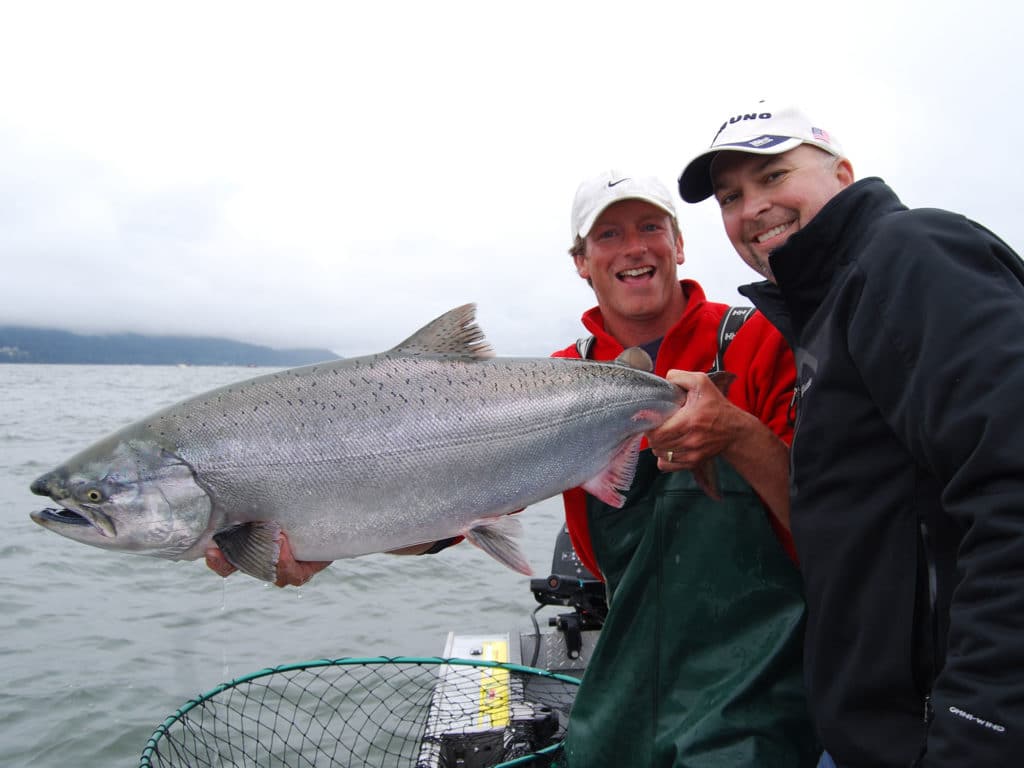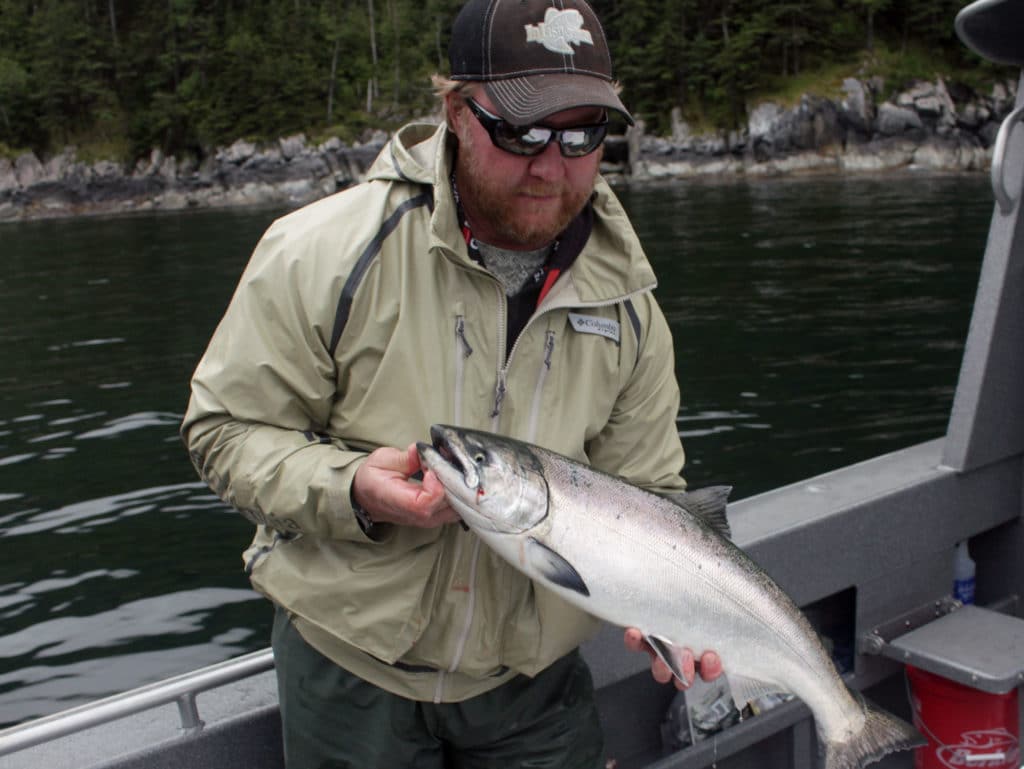
Professional Alaska salmon guide Mark Hieronymus unraveled the mysteries to casting at and hooking the largest salmon in North America, the Chinook salmon (often called the king salmon). These giants, commonly weighing 20 to 50 pounds, pack a widespread reputation for being sullen, close-mouthed and next to impossible to bring to the fly, especially flies cast not trolled.
King Salmon Fly Fishing Tackle
Hieronymus’ advice starts with gearing up. For single-hand casting he uses a 10-weight Echo EPR rod, and an Abel Super 12 large arbor reel that holds 250 yards of 80-pound Spectra (braided) backing. The backing connects to a full intermediate 10-weight Airflo Sniper line, and then knots straight to a 6-foot leader of 20-pound fluorocarbon.
For two-handed chinook casting, he favors an Echo Full Spey 8-weight carrying a Loop Megaloop reel, loaded with 250 yards of 80-pound Spectra backing to 100 feet of running line 50-pound P-Line Hydrofloat. From there, he connects 13 feet of 70 grain Type III sink tip Airflo Skagit Compact and a 4-foot leader of 20-pound fluorocarbon.
King Salmon Fly Fishing Success
His highest king salmon saltwater success is near terminal areas. “When mature kings get closer to terminal areas, they tend to school and circle. I pattern the circle and spend as much time as possible casting to where they either linger or are turning, maximizing the time that fish can see and react to the fly.”
Mark’s favorite fly pattern is loosely based on Dave Pinczkowski’s Bad Hair Day — mostly craft fur with a bit of flash thrown in. “I tie on 2/0 and 3/0 saltwater hooks (Umpqua XS 415), [wrap] them in pink, white, and chartreuse, with and without flash, and that is my go-to for most of the season,” he says.
Early in the return, when the first king salmon start showing, Mark finds that white and chartreuse fish well, especially with a bit of gold flash. As the season progresses, pink starts to out fish white and chartreuse. “I have had good results with 4- and 6-inch flies in the earlier part of the season, but these salmon definitely prefer smaller flies later in the season,” says Hieronymus.

In tidal areas with current, Mark prefers swinging flies with a two-handed Spey rod. “I cast, let the fly sink to depth, then pump the rod back and forth,” he says. “The ‘dead swing’ works too and is a lot easier to fish, but the ‘pump’ imparts fly action that’s more productive.”
When casting a single-hand, he tries to judge how deep the bulk of the moving fish are, and that fish movement depends on light conditions, water clarity, and how active the salmon are.
“I cast and count-down while the line and fly sink to my target depth before retrieving,” he says. “For the retrieve, I pull 18- to-24-inch strips quickly but smoothly with about a second pause between strips. If this doesn’t elicit the preferred response, my first change is to speed up the strips with less pause between strips. If that doesn’t work, my next go-to option is to strip slower with longer strips and less pause between strips.”
How to Fight King Salmon with Fly Tackle
A hooked chinook salmon can explode like a bank-robber running away in a dragster, but that’s only after the hook finds its home. The king salmon take often feels like a kitten’s paw. Usually the fly just stops, a soft non-strike of tightening resistance.
When you are convinced it’s a fish strike, strike viciously with enough leverage to bury a honed hook deep in an exceptionally tough mouth.
Typically, Chinook salmon will respond with powerful head shakes, then explode on a blistering run that melts line from the spool and well into the backing. This is not the time to adjust the drag or touch the reel handle. Wait until the run fades, then tighten slightly and get ready for a second run which will probably be followed by a boat-run, a torpedo straight back at the boat. Get the rod tip high and strip slack as fast as possible. When you finally catch up to the salmon, when you feel weight on the rod, that’s when to make any necessary drag adjustments. Typically after a boat-run, Chinook will sound, some go all the way to bottom and try to rub the fly out its mouth in the mud, gravel and sea shells. Hang on, keep the rod bowed, and enjoy.









